NIL
Jordan Brand scores big with Carolina Panthers' Tetairoa McMillan joining the elite roster of …
In a move that intertwines the legacy of basketball’s greatest icon with the gridiron’s emerging stars, Tetairoa McMillan of the Carolina Panthers has inked a deal with Jordan Brand, joining an illustrious group of athletes who transcend their sports. This partnership not only highlights McMillan’s burgeoning talent but also underscores Jordan Brand’s strategic expansion beyond […]
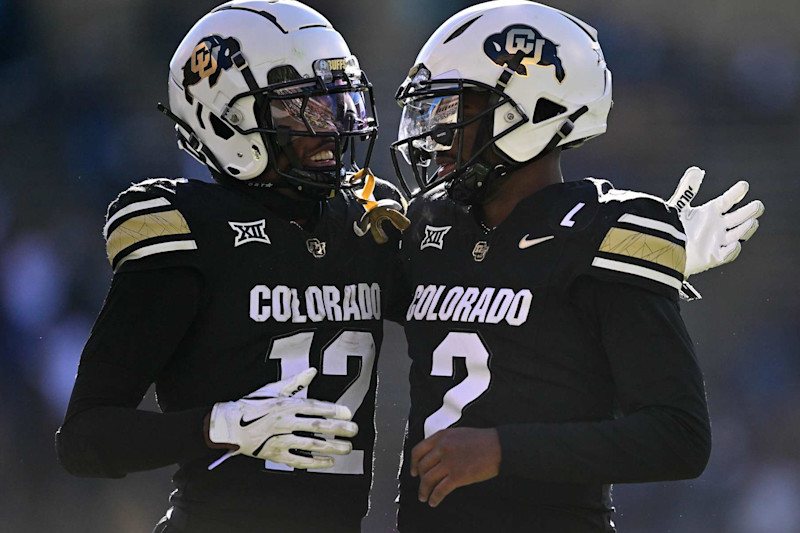
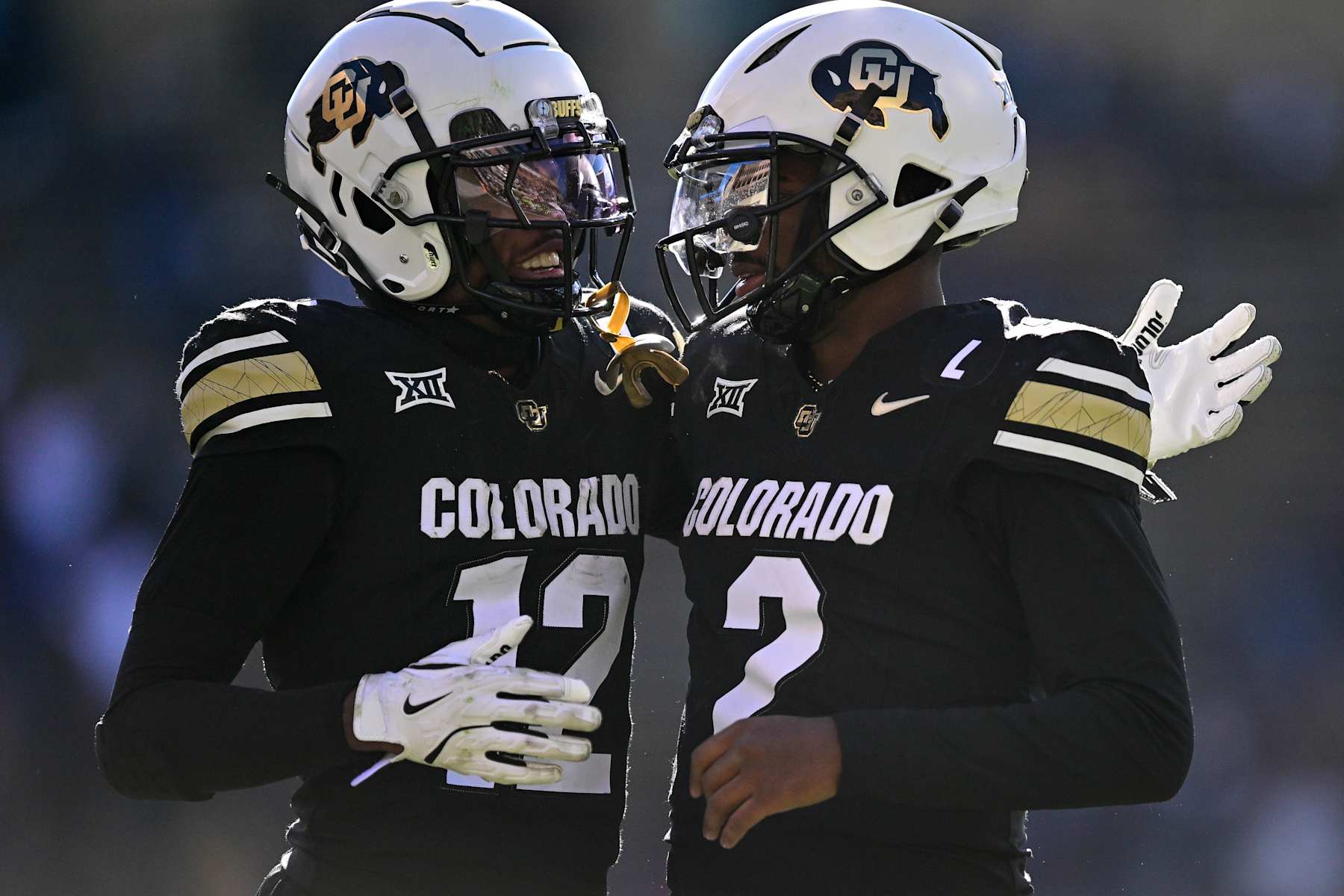

In a move that intertwines the legacy of basketball’s greatest icon with the gridiron’s emerging stars, Tetairoa McMillan of the Carolina Panthers has inked a deal with Jordan Brand, joining an illustrious group of athletes who transcend their sports. This partnership not only highlights McMillan’s burgeoning talent but also underscores Jordan Brand’s strategic expansion beyond the hardwood.
The Evolution of Jordan Brand in Sports
Historically, the Air Jordan Jumpman logo has been a symbol of excellence and achievement in basketball, thanks to Michael Jordan’s unparalleled legacy. However, the brand has strategically broadened its horizons, venturing into golf, racing, and notably, football. This diversification reflects Jordan Brand’s ambition to embody the spirit of excellence in all sports, resonating with athletes who share a relentless pursuit of greatness.
Tetairoa McMillan: A Rising Star
Tetairoa McMillan, the Carolina Panthers’ first-round pick from Arizona, is not just any athlete. His journey to the NFL is a testament to hard work, resilience, and the relentless pursuit of excellence—qualities that align perfectly with Jordan Brand’s ethos. By signing with Jordan Brand, McMillan not only secures his place among a roster of elite athletes but also signals his ambition to leave a lasting impact on the field.
A Symbolic Partnership
The partnership between McMillan and Jordan Brand is symbolic on multiple levels. It represents the merging of two worlds—basketball’s rich heritage and football’s dynamic energy. For McMillan, wearing the Jumpman logo is a badge of honor and a constant reminder of the greatness that he aspires to achieve. It’s a partnership that speaks volumes about his potential and Jordan Brand’s confidence in his ability to inspire the next generation of athletes.
Implications for the Future
As McMillan embarks on his professional career with the Carolina Panthers, his alliance with Jordan Brand is poised to inspire aspiring athletes across the globe. It’s a vivid reminder that the path to greatness transcends sports, embodying the values of dedication, perseverance, and the relentless pursuit of excellence. For Jordan Brand, signing McMillan is a strategic move that reinforces its commitment to supporting athletes who aspire to redefine the boundaries of their respective sports.
In conclusion, Tetairoa McMillan’s partnership with Jordan Brand is more than just an endorsement deal. It’s a confluence of past and future, a testament to the enduring legacy of Michael Jordan, and a beacon of inspiration for the next generation. As McMillan steps onto the field, he carries with him the weight of expectation and the promise of greatness, emblematic of the Jumpman logo that adorns his gear. This partnership not only elevates McMillan’s profile but also solidifies Jordan Brand’s position as a catalyst for excellence in sports beyond basketball.
NIL
Gym Heels Abroad: Gwen Fink & Claire Stippich
CHAPEL HILL, N.C. – Carolina Gymnastics’ seniors Gwen Fink and Claire Stippich took their studies abroad this summer. Fink dove into eco-tourism and sustainability in Thailand while Stippich studied sustainability in business in Portugal. Fink is currently pursuing degrees in Political Science and Management and Society. The Fort Mill, S.C. native headed to Thailand for her […]
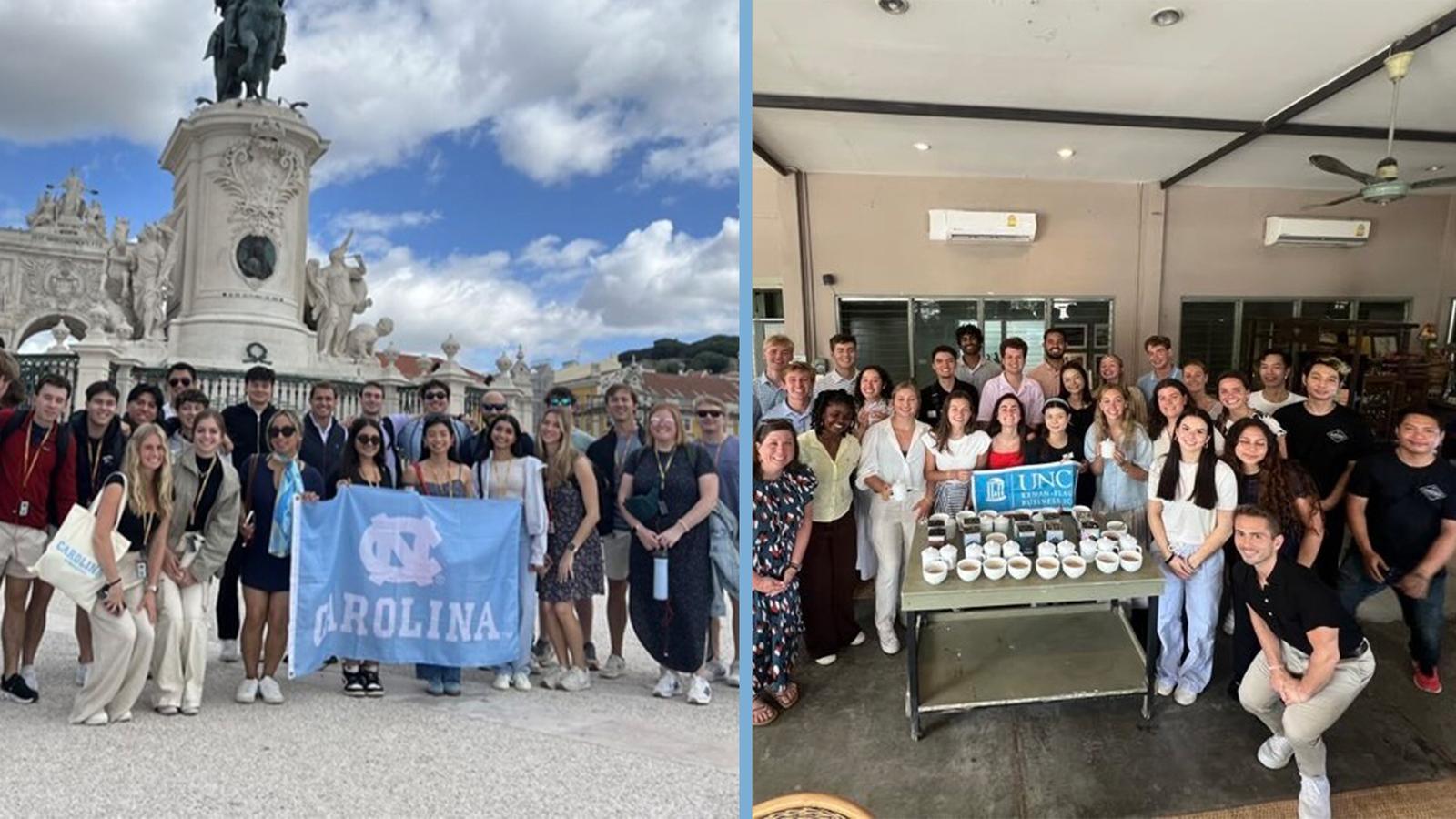
Fink is currently pursuing degrees in Political Science and Management and Society. The Fort Mill, S.C. native headed to Thailand for her first time to explore the importance of eco-tourism and maintaining sustainability. This experience combined her passion for environmental protection and academic studies in policy and law.
UNC was recently ranked no. 5 for public schools in the country in U.S. News & World Report’s 2025 Best Colleges rankings. Carolina’s academic rigor helps students prepare for opportunities such as studying abroad where they combine what they’ve learned in the classroom with real-world experiences while being immersed in various cultures. Fink explained, “UNC prepared me well for this experience, particularly through my coursework in political science. I was able to connect what I’ve learned in the classroom to real-world policy outcomes. This deepened my interest in how environmentalism and public opinion intersect in shaping effective global solutions.”
Stippich currently studies Business Administration and Marketing at Carolina and expanded on her coursework abroad this summer. The all-around gymnast traveled throughout Portugal to study sustainability in business.
From engaging with locals and fellow students to trying new foods, Portugal provided Stippich an opportunity to step outside her comfort zone and grow as a person. Ultimately, Stippich left Portugal with a greater understanding of sustainability and how she can further her career goals.
The new experiences that accompany studying abroad can be challenging to navigate, but Stippich’s time as a student-athlete at Carolina helped prepare her. The senior explained, “Being a UNC athlete taught me time management skills and the ability to adapt quickly in new situations. All these skills were essential when studying abroad to handle busy schedules and last-minute changes in plans.”
Different courses. Different parts of the world. Different cultures. Both Fink and Stippich left with greater worldviews and understanding for their respective career paths. “It made me think more about the impact I want to make in my future career,” said Stippich.
“This experience has been one of the most rewarding parts of my time at UNC. I gained a clearer understanding of how to approach global challenges with both cultural awareness and policy insight.” Fink continued, “environmental problems require global collaboration, and that lasting solutions must be built with respect for cultural differences.”
Stay up to date with Carolina Gymnastics by following the Tar Heels on Twitter, Instagram and Facebook.
NIL
Katie Taylor upsets Amanda Serrano by majority decision in third matchup
On Friday night, Katie Taylor and Amanda Serrano met for the third time in their respective careers. Taylor completed a clean sweep of the trilogy, defeating Serrano via majority decision to retain the undisputed super-lightweight title. The bout wasn’t nearly as hectic as the first two meetings between Serrano and Taylor. The pair started slow, […]

On Friday night, Katie Taylor and Amanda Serrano met for the third time in their respective careers. Taylor completed a clean sweep of the trilogy, defeating Serrano via majority decision to retain the undisputed super-lightweight title.
The bout wasn’t nearly as hectic as the first two meetings between Serrano and Taylor. The pair started slow, feeling each other out and finding a rhythm in the fight.
As the match’s pace picked up, Serrano began to throw more volume, but Taylor often got the better of the exchanges, landing heavier blows when she connected. Nonetheless, Serrano was the aggressor for all 20 minutes of the fight, constantly pushing forward.
Despite Serrano’s pace, Taylor never seemed shaken. In the end, the judges appreciated Taylor’s calm demeanor and heavy hands, rewarding her with a victory. Though, it’s worth noting that one judge scored the fight a draw. The other two judges scored the fight 97-93 in favor of Taylor.
The fight was live-streamed on Netflix, the streaming company’s latest venture into the livestream space. The event only included women boxers, a landmark moment in boxing history.
“The goal for this all-women’s card is to put the world on notice that women’s boxing is just as entertaining as men’s and can be just as exciting, if not more,” Jake Paul, whose company Most Valuable Promotions is presenting Friday’s event, told ESPN. “This is the moment where multiple women on the card can garner a bigger audience and become superstars. They have the opportunity to be recognized by audiences outside of the normal boxing crowd and expand the fan base, just like Caitlin Clark and Angel Reese did for the WNBA.”
History of the Katie Taylor-Amanda Serrano rivalry
Katie Taylor and Amanda Serrano first fought on April 30, 2022, in Madison Square Garden. The lightweight championship bout was dubbed “For History” because it was the first women’s boxing match to headline Madison Square Garden.
The fight delivered, with the pair giving fans a show they’d never forget. Both fighters went the distance, and Taylor ultimately won the fight via split decision. The bout was named Fight of the Year by Sports Illustrated and Event of the Year by The Ring.
Taylor and Serrano were set for a rematch in May 2023, but the bout was called off due to a lingering injury that Serrano was battling. Nonetheless, the rematch couldn’t be postponed forever and on Nov. 15, 2024, the two champions met again.
They were the co-feature bout to Mike Tyson vs. Jake Paul, and the fight was live-streamed on Netflix. Once again, the duo delivered an all-time war that brought fans to their feet. Despite many fans believing Serrano was the better fighter in the rematch, Taylor won again, this time by unanimous decision.
With the trilogy officially complete, Katie Taylor can have the last laugh in the rivalry. Nonetheless, if the past have proven anything, Katie Taylor and Amanda Serrano are always capable of making more history.
NIL
More Hawai'i history set to be made in 2025 MLB Draft
In 1985, University of Hawai‘i pitcher Mike Campbell was selected with the seventh overall pick of the MLB Draft by the Seattle Mariners. Later in that same draft, ‘Iolani alumnus and 6-foot-9 University of California righty Dave Masters was taken 24th overall by the Chicago Cubs. It was the first and only time two players […]
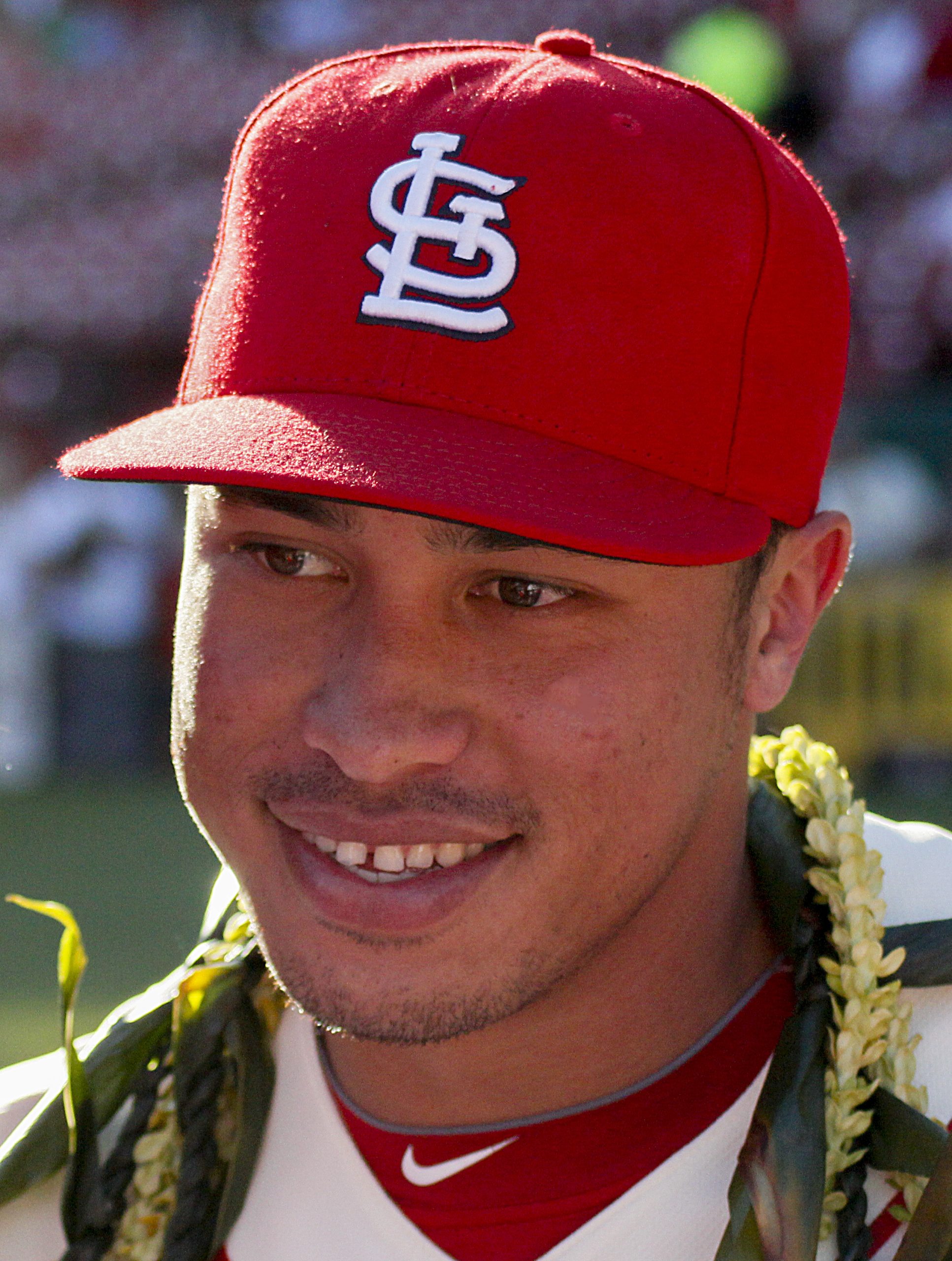


In 1985, University of Hawai‘i pitcher Mike Campbell was selected with the seventh overall pick of the MLB Draft by the Seattle Mariners. Later in that same draft, ‘Iolani alumnus and 6-foot-9 University of California righty Dave Masters was taken 24th overall by the Chicago Cubs. It was the first and only time two players with Hawai‘i ties were selected in the first round in the same MLB Draft.
Forty years later, a new type of history is set to be made regarding players from the Islands in the MLB Draft.
Saint Louis alumnus Aiva Arquette and Baldwin alum Wehiwa Aloy are both poised to become first round selections when the 2025 MLB Draft gets underway on Sunday at noon HST. The duo would become the first from Hawai‘i high schools to do so.
Arquette and Aloy both had stellar seasons in the spring, leading their respective college teams to the College World Series in June.
Following his senior season at Saint Louis, Arquette was taken in the 18th round of the 2022 MLB Draft but instead chose to play collegiately at the University of Washington. After two years with the Huskies, Arquette entered the NCAA transfer portal and transferred to Oregon State, where he slugged 19 home runs while committing just six errors as the team’s starting shortstop. All the while, his .354 batting average led the Beavers.
Aloy began his collegiate career at Sacramento State. After earning Freshman All-American honors, he entered the transfer portal and played the final two seasons of his collegiate baseball career at the University of Arkansas.
In 2025, Aloy took home the Golden Spikes Award, given annually to the country’s top amateur baseball player. He started all 65 games for the Razorbacks in 2025, hitting 21 home runs with a .350 batting average.
Although Aloy was awarded college baseball’s top individual honor, the 6-foot-5 Arquette is viewed as the slightly better pro prospect. Arquette is viewed as a Top 10 pick, while Aloy is also expected to be off the board by the time the first round ends.
The 2025 MLB Draft begins on Sunday with rounds 1-3 and wraps up on Monday with rounds 4-20 beginning at 5:30 a.m. HST. Although Arquette and Aloy are viewed as Hawai‘i’s headliners in the draft, a handful of other names remain on the radar for teams making selections.
Not far behind Arquette and Aloy as a prospect is Saint Louis shortstop and 2025 Hawai‘i Gatorade Player of the Year Bruin Agbayani. Although he signed a scholarship agreement with the University of Michigan, he is likely to get selected within the first five rounds.
Throughout various showcases and tournaments, Agbayani’s bat has proven to travel well. He turned heads in June’s MLB Combine in Arizona, stacking up hits against some of the top arms in the country.
‘Iolani senior Mana Lau Kong signed with the University of Hawai‘i, but there’s also a chance he doesn’t make it campus after being monitored by various MLB organizations.
With the increasing amount of pro scouts taking in regular season high school baseball games in Hawai‘i, the two that appeared to receive the most interest from pro scouts in 2025 were Kamehameha‘s Elai Iwanaga and Kaiser’s Bryson Toner. Iwanaga is set to play collegiately at UCLA, while Toner will play at Loyola Marymount if he does not go pro this summer.
Mililani senior shortstop Malosi Mata’afa-Alferos also received pro looks over the course of his high school career, though he is considered more likely to move on to the University of Oregon in the fall rather than turn professional.
In the local collegiate baseball scene, Hawai‘i Pacific University‘s Bronson Rivera caught the attention of scouts with his 2025 season in which he hit a program record 19 home runs while maintaining a .377 batting average.
As for the University of Hawai‘i, sophomore Itsuki Takemoto is viewed as the program’s top draft-eligible prospect. Utility player Ben Zeigler-Namoa has received pro interest dating back to his days as a junior college player at Yavapai College in Arizona, and his passion for the game has been lauded by scouts.
Matthew Miura, Jordan Donahue, Jared Quandt and Kamana Nahaku are other draft-eligible names for UH that have previously received pro interest.
For the latest news of Hawai‘i, sign up here for our free Daily Edition newsletter.
Christian Shimabuku can be reached at christian@alohastatedaily.com.
In case you missed it
NIL
Panama's Barmore makes EA Sports College Football 26 debut, will do the same at Arizona
After transferring to the University of Arizona this past winter, Cameron Barmore is “in the game” for the first time, making his debut in the popular video game EA Sports College Football 26. Images courtesy of EA Sports College Football 26 TUCSON, Ariz. — Cameron Barmore doesn’t own a gaming console. He rarely plays video […]



After transferring to the University of Arizona this past winter, Cameron Barmore is “in the game” for the first time, making his debut in the popular video game EA Sports College Football 26.
Images courtesy of EA Sports College Football 26
TUCSON, Ariz. — Cameron Barmore doesn’t own a gaming console.
He rarely plays video games.
But earlier this week, he received a private message from a young boy in western Chautauqua County saying “You just won me the Rose Bowl.”
The boy was referencing Barmore’s character in the popular video game EA Sports College Football 26. After transferring to Arizona University this past winter, Barmore is “in the game” for the first time.
Such is the life of a big-time NCAA Division I athlete from a small town.
ı ı ı
Barmore, a 2020 graduate of Panama Central School, spent the first five years of his collegiate career at Mercyhurst University in Erie, Pennsylvania.
While with the Lakers, the 2019 New York State Sportswriters Association Class D co-Player of the Year who led the Wolfpack to back-to-back state titles in high school, caught 165 passes for 2,319 yards and 29 touchdowns.
Mercyhurst, which was an NCAA Division II program prior to this past season, earned its first Division I win on Nov. 23, 21-20 over St. Francis University. It was a bittersweet final game for Bamore, who caught eight passes for 129 yards and two touchdowns — the last coming with 42 seconds remaining to essentially give the Lakers the win and complete a 4-7 season.
“I was just happy to get the win,” Barmore said. “I had a feeling in the back of my head that would be my last game there.”
Following the season, with the blessing of Mercyhurst head coach Ryan Riemedio, Barmore entered the transfer portal hoping to end his collegiate career on an even bigger stage.
“It was tough leaving my brothers there,” Barmore said. “I was there for five years and I loved it there.”
Once Barmore received his transfer portal number Nov. 25, he officially announced on X that he was entering the transfer portal.
The response was immediate.
“I entered right before a night class … I gained 700 followers in an hour,” Barmore said. “From there on, that first week, I was probably on my phone 11 or 12 hours a day.”
Offers from Austin Peay, Old Dominion, Liberty, Western Michigan and others came. Florida Atlantic and Middle Tennessee State followed.
Along with scholarship offers came NIL offers.
“I wasn’t really making any decision based on money,” Barmore said, “it was more about football.”
Power programs came calling: Stanford, Virginia Tech, Houston and Ole Miss.
“I do have an agent and they helped, but the majority was on Twitter and reaching out that way,” Barmore said. “I was pretty much going in blind. I didn’t really have an idea at all. I was just hoping and grateful for anything.”
But Barmore’s decision ultimately came down to Texas Tech and Arizona. He first visited Texas Tech and nearly committed to the university in Lubbock, but a last-minute commitment from another tight end prospect turned Barmore to the Wildcats.
“I would’ve gone back to Mercyhurst,” Barmore said. “I don’t know if I was expecting bigger schools like Arizona and Texas Tech to actually offer.”
During a visit to Tucson, he talked to second-year head coach Brent Brennan and first-year offensive coordinator Seth Doege before officially committing on Dec. 23.
“I didn’t really know anything about Arizona football. After the visit, I loved the coaching staff — head coach Brennan and (offensive coordinator) Coach Doege,” Barmore said. “It was about more than football at that point. They were looking at players like they’re real people.”
ı ı ı
Barmore will certainly have competition for snaps at Arizona.
He says he is one of at least eight in the tight end room and figures to be one of at least four who travel for the Wildcats’ road games.
“It’s been a lot more tight end than receiver,” Barmore said about a shift he’s been making since leaving Mercyhurst. “The spring was a big change going from outside receiver to kicking out defensive ends and pulling for linebackers. I hope they use me like more of a receiving tight end.”
For what it’s worth, he’s listed as the third tight end on the depth chart in the video game with an overall rating of 74. Barmore’s highest individual rating is his strength (82), followed by agility (78), acceleration (77), speed (76), awareness (76), change of direction (75), ball-carrier vision (74), break tackle (73), stiff arm (72) and trucking (69).
But his jersey number is incorrect — he will wear No. 80, not No. 88 — his hair is too light and his mustache is missing.
Listed at 6-foot-6, 230 pounds, Barmore is labeled a physical route runner in the game.
His main competition in the tight end room — virtually and in real life — are Keyan Burnett, who transferred to Kansas in December, but returned this spring, and Sam Olson.
Burnett caught 18 passes for 217 yards and a touchdown while Olson had 13 catches for 196 yards and two touchdowns last year.
“It was great. I’ve never learned that much football that fast. It was a lot of learning, figuring out the game speed,” Barmore said of the Wildcats’ 13 spring practices. “There are probably eight or nine tight ends. Everybody has their different strengths.”
ı ı ı
Barmore admits he’d rather be 30 minutes from home than 36 hours, but “had to be selfish and do what I thought would be best for me,” leaving Mercyhurst.
Arizona’s season gets underway in Tucson on Saturday, Aug. 30 at 7:30 p.m. Mountain Time against Hawaii. The Wildcats will then host Weber State on Sept. 6 at 7 p.m. before opening Big 12 play Friday, Sept. 12 against Kansas State.
“I feel like Game 1, playing in front of the biggest crowd I ever have will be a fun one,” Barmore said. “That’s the one I’m most looking forward to.”
Following a bye week, Arizona will go on the road for the first time when it travels to Iowa State University on Saturday, Sept. 27.
The closest Barmore and the Wildcats will come to Western New York will be Saturday, Nov. 15 when they visit the University of Cincinnati.
Senior Day will take place Saturday, Nov. 22 against Baylor inside Arizona Stadium and the Wildcats will finish the regular season with the 99th edition of the Territorial Cup against Arizona State University at Mountain America Stadium in Tempe.
NIL
Thanks to ‘EA Sports College Football’, gamers are the new four-star recruits
Every year, the top college football schools in the country compete against one another to recruit highly ranked prospects coming out of high school. The current college football offseason, however, is looking a little different. Athletes are still being wooed by prestigious programs, but so are creators — and EA Sports College Football 26 is the […]
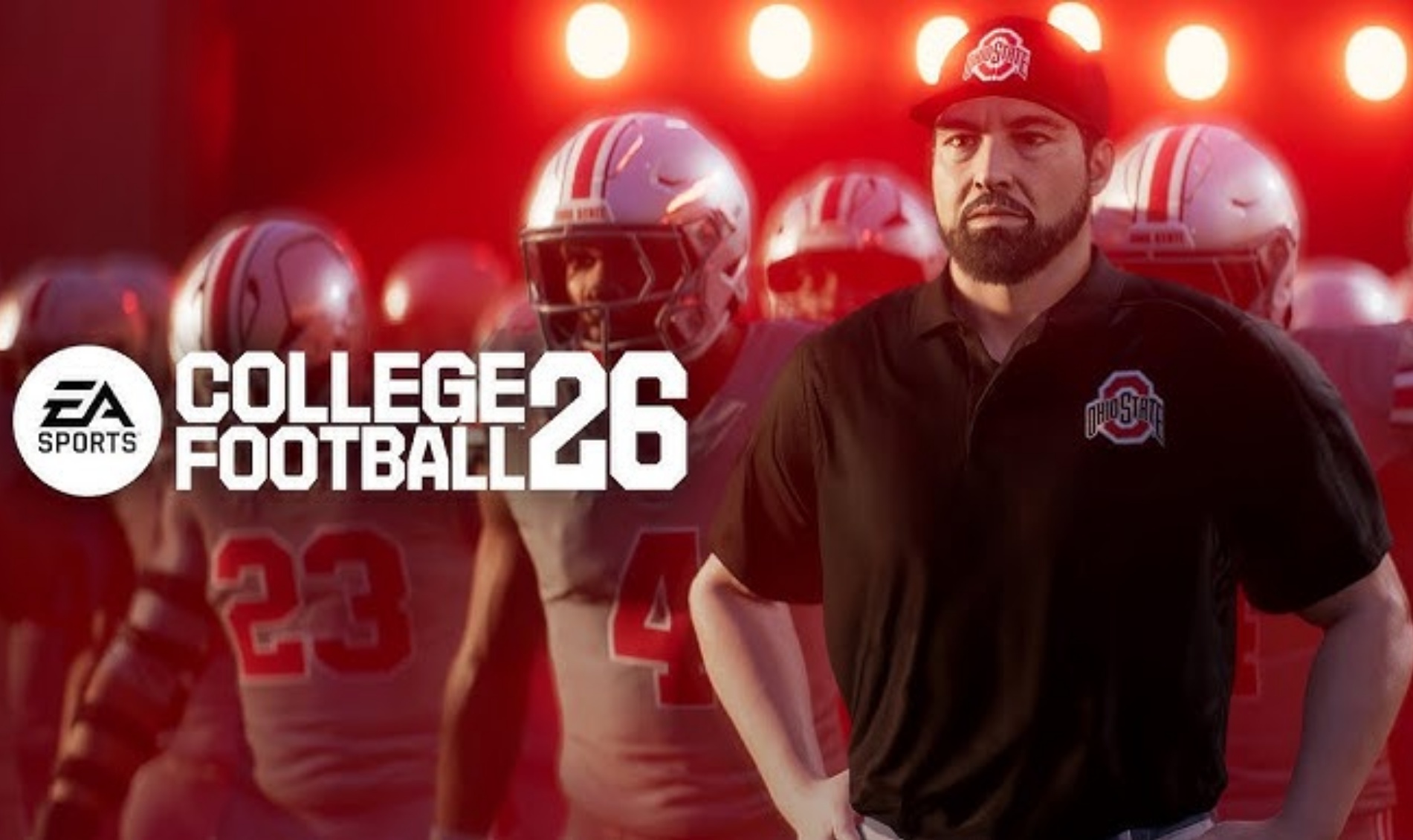
Every year, the top college football schools in the country compete against one another to recruit highly ranked prospects coming out of high school. The current college football offseason, however, is looking a little different. Athletes are still being wooed by prestigious programs, but so are creators — and EA Sports College Football 26 is the main reason why.
College Football 26, which EA released on July 10, is the latest chapter in a video game franchise that dates back to the 90s. Early installments of the series rank among the best sports video games of all time, but the gridiron simulator was forced into dormancy after courts ruled that game publishers could not include amateur athletes who were (at the time) unable to profit from depictions of their likenesses.
The advent of name, image, and likeness (NIL) deals for college athletes changed the narrative. As the value of NIL deals skyrocketed, EA chose to bring back College Football, and players rejoiced. College Football 25 became one of the most-played games of the year.

Subscribe to get the latest creator news
College Football 26 is here, so it’s time for creators to make The Decision.
EA paid out millions to athletes to license their likenesses for use in its fan-favorite franchise. But the players aren’t the only ones to benefit from this gold rush — gamers are cashing in, too.
The Athletic reported that Bordeaux, a popular College Football creator on YouTube, received personalized packages from schools that wanted him to play for their teams on his channel. The bidding environment resembled the feeding frenzy that surrounds coveted high school recruits, and the University of Nebraska ultimately reaped rewards when Bordeaux chose to play as the Cornhuskers in College Football 25.
Now, with the next chapter of the sports simulator out, Bordeaux is once again bringing back his most visible formats. He recently posted an “imperialism” video that pits college football powerhouses against one another in search of territorial expansion.
Bordeaux is one of several creators turning College Football videos into a full-time job. “It shows how deep people’s love for their team is that they were so interested in what a random guy on the internet was going to do, because it could be their team,” he told The Athletic.
Creators are the new blue turf
In 1986, Boise State University covered its football field in bright blue artificial turf. Initially, the colorful field was a mere curiosity, but then something funny happened: Boise State started winning a lot of football games. Since 1999, the Broncos have brought 16 conference championships to the Idaho capital.
The correlation between the installation of blue turf and the reversal of Boise State’s football fortunes could be a coincidence, but the unique field allowed the Broncos to stand out, both literally and figuratively. When you have one of the best attractions for football fans inside your stadium, it helps convince players to come play for a school they may have otherwise ignored.
In the 2020s, creators are doing for schools what blue turf did for Boise State in the 90s and 00s. Features from popular gamers like Bordeaux draw attention to Division I football programs, giving them an edge in the recruiting game.
It’s not just football, either
Among many other creative projects, author and Vlogbrother John Green has become a fan of English soccer club AFC Wimbledon, his go-to choice in sim games like Football Manager. Green’s Wimby affinity started in pixelated fashion, but it has since extended to the real world. After buying a sponsorship on Wimbledon uniforms and helping the club sign new players, the elder Green brother took his fandom to the next level by acquiring a minority stake in the club.
For Green, Wimbledon ownership is a fun diversion that also entertains his fans. But for the club, support from a big-name creator is crucial. As some European clubs fold due to poor financial circumstances, others are seeing celebrity affiliation as a long-term survival strategy.
Thanks to the current nature of the sports business, anyone with a significant following can become involved in real-world operations. John Green and Bordeaux are two of the first examples of that trend — but they won’t be the last.
NIL
Crackdown on NIL Collectives Might Reshape the College Sports Scene
Crackdown on NIL Collectives Could Reshape College Sports Landscape A new enforcement agency in college sports has drawn a firm line regarding the regulation of name, image, and likeness (NIL) payments to athletes — a move that could dismantle how many school-affiliated collectives currently operate. On Thursday, the College Sports Commission (CSC) issued new guidance […]
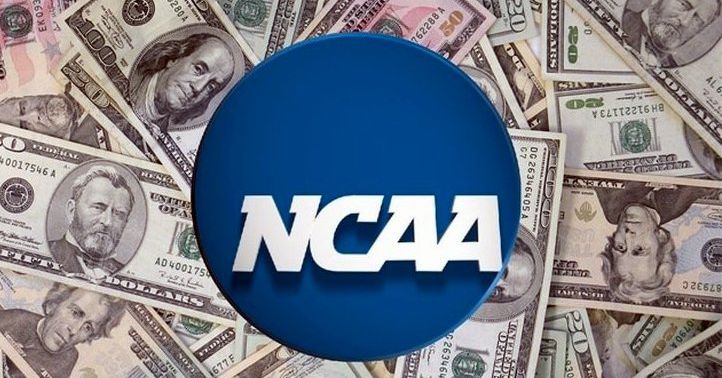
Crackdown on NIL Collectives Could Reshape College Sports Landscape
A new enforcement agency in college sports has drawn a firm line regarding the regulation of name, image, and likeness (NIL) payments to athletes — a move that could dismantle how many school-affiliated collectives currently operate.
On Thursday, the College Sports Commission (CSC) issued new guidance that significantly narrows what qualifies as a “valid business purpose” for NIL deals. The announcement came just days after the $2.8 billion House v. NCAA settlement took effect on July 1, establishing a clearinghouse called NIL Go to review third-party deals exceeding $600.
The goal is to prevent schools from circumventing the new $20.5 million revenue-sharing cap by routing funds through booster-backed collectives.
According to the CSC, any entity whose primary function is paying athletes — rather than offering legitimate goods or services to the public — fails to meet NIL Go’s standards. This includes collectives that host events or sell merchandise primarily to fund player payments. Even if these events are open to the public or involve promotional efforts, the CSC says they still don’t qualify.
“For somebody to just slide you a few dollars because they want you to come or stay at a certain school and call it NIL — that’s make-believe,” Purdue Athletic Director Mike Bobinski said in an interview with NBC Sports.
The ruling has sent shockwaves through the NIL ecosystem. In the four years since NIL deals became legal, school-affiliated collectives have funneled hundreds of millions of dollars into athlete compensation — often functioning as unofficial arms of athletic departments. These groups have paid athletes for appearances, endorsements, and social media promotions. But with the CSC now rejecting most of these deals, that model appears to be collapsing.
A memo sent to Division I athletic directors clarified the new standard: agreements with collectives primarily created to pay athletes or benefit specific schools will no longer be approved. While external NIL deals are still allowed, they must be with companies offering real products or services to the general public and must reflect fair market value.
The backlash was immediate. The Collective Association, which represents NIL collectives nationwide, called the CSC’s interpretation “misguided,” arguing it ignores both legal precedent and the economic realities of college athletics. The group claimed collectives are essential to athlete support and are being unfairly targeted.
Adding to the frustration, collective leaders like Dalton K. Forsythe of Utah State’s Blue A Collective reported widespread rejections of submitted NIL deals. “Nearly 100 percent of collective-backed NIL deals are being denied,” Forsythe posted on X, citing inconsistent standards and poor communication from NIL Go.
In response, some top programs are already adjusting. Collectives affiliated with Colorado, Alabama, Notre Dame, Georgia, and others have announced shutdowns. Meanwhile, schools like Ohio State, Georgia, and Illinois are partnering with Learfield — a long-established media and licensing firm — to ensure NIL deals comply with the new rules.
Despite the chaos, NIL Go has approved over 1,500 deals since launching in June, ranging in value from hundreds to millions of dollars. More than 12,000 athletes and 1,100 institutions are already registered. However, most approved transactions have involved athletes and legitimate businesses — not donor collectives.
Ultimately, the CSC has made clear that the future of NIL lies in traditional sponsorships and commercial endorsements, not donor-funded payouts. Whether courts will uphold these rules — or whether athletes will challenge them on antitrust grounds — remains to be seen. For now, though, the days of collectives writing large checks behind the scenes may be coming to an end.
NIL Crackdown Could Shake Up the Mountain West Conference
The College Sports Commission’s new enforcement guidance is expected to significantly impact the Mountain West Conference (MWC), where many schools have relied on donor-driven collectives to remain competitive in a rapidly evolving landscape.
With the July 1 implementation of the House v. NCAA settlement and the launch of NIL Go, third-party deals over $600 now require approval and must meet strict new standards. At the core is a simple requirement: NIL deals must have a “valid business purpose” and reflect “fair market value.” This change effectively invalidates many of the collective-based agreements MWC schools have used to attract and retain talent.
Why It Matters in the MWC
Unlike Power Five schools with massive alumni networks, national brand recognition, and lucrative TV deals, Mountain West programs have depended heavily on local businesses and booster collectives for NIL funding. These groups have helped schools compete for transfer portal athletes or retain breakout stars vulnerable to poaching.
That strategy is now at risk.
According to the CSC’s latest memo, any NIL deal where a collective pays an athlete merely for attending an event or helping promote merchandise — a common practice among MWC collectives — no longer meets the “valid business purpose” threshold. The Commission argues these transactions are not tied to legitimate commercial activity but instead serve as disguised payments, making them clear violations under the new rules.
Potential Fallout for Mountain West Schools
This shift could hit programs like Boise State, Fresno State, San Diego State, and Utah State particularly hard. These schools have developed strong football reputations but lack the deep financial backing of Big Ten or SEC institutions.
- Boise State has relied on a passionate fan base and collective support to maintain its status as a Group of Five powerhouse. Without that funding source, Boise could fall behind in the NIL arms race.
- Utah State’s Blue A Collective is already feeling the pressure. Director Dalton Forsythe reports that nearly all of their NIL submissions are being rejected under the new rules, calling the standards “unclear and unrealistic.”
- Fresno State and San Diego State have used competitive NIL offers to retain local talent, but that ability may diminish without collective-based funding, making it harder to keep players from transferring out.
Shifting the Strategy
With collective-led NIL deals under fire, Mountain West programs will need to shift toward compliant, athlete-to-business partnerships. But that transition won’t be easy. Local businesses in MWC markets often lack the advertising budgets or incentive to sign athletes without school involvement.
Some Power Five schools have already moved to fill this gap by partnering with companies like Learfield to streamline compliant NIL opportunities. Mountain West institutions may need to follow suit, though doing so with fewer resources will be a steep challenge.
The Bigger Picture
This shake-up may further widen the gap between Power Five and Group of Five programs. Although the House settlement allows schools to compensate athletes up to $20.5 million annually directly, most MWC institutions don’t have the budget flexibility to fully utilize that cap.
Mountain West Commissioner Gloria Nevarez said the league is considering implementing a revenue-sharing minimum starting in the 2025-26 season. If approved, the plan would ensure at least a baseline level of NIL funding across the conference. However, lingering legal issues over departing members and the lack of a finalized media rights deal leave much uncertain.
Nevarez emphasized that protecting competitive balance is critical, especially as NIL compensation becomes central to recruiting.
Without collectives as a workaround, the Mountain West risks becoming a feeder league, developing top talent only to watch it transfer to schools offering better NIL opportunities.
In short, unless national rules shift again — or MWC schools find new, sustainable NIL models — the league’s ability to compete at a national level could suffer dramatically under this new NIL landscape.
As everything in the NCAA college sports scene, you just don’t know what a day will bring. It’s like this big NCAA college soap opera from a fan’s perspective.
As the NIL landscape undergoes its most dramatic shift yet, the Mountain West Conference finds itself at a crossroads.
The new rules may level the playing field in theory, but in practice, they risk sidelining programs that have used creativity and community support to stay relevant.
With traditional collectives on the chopping block and commercial partnerships harder to come by in smaller markets, MWC schools must now adapt quickly—or risk falling further behind in a system increasingly tilted toward the power conferences.
The next chapter in college athletics will be defined not just by talent on the field, but by who can navigate the off-field rules best.
-

 Technology2 weeks ago
Technology2 weeks agoPet fitness and wellness trends for a healthier and happier dog
-

 College Sports2 weeks ago
College Sports2 weeks agoWAC to Rebrand to UAC, Add Five New Members in 2026
-

 Motorsports2 weeks ago
Motorsports2 weeks agoWhy Cosmetics are Making Up for Lost Time in Women’s Sports
-

 Professional Sports3 weeks ago
Professional Sports3 weeks agoFrancis Ngannou sends Dana White a message following Jon Jones' shock UFC retirement
-

 College Sports2 weeks ago
College Sports2 weeks agoA new era of Dickinson hockey begins behind the bench – The Dickinson Press
-

 Sports3 weeks ago
Sports3 weeks agoSEC Conference imposing a fine will create the opposite effect.
-

 Health2 weeks ago
Health2 weeks agoFlorida assault survivor shares hope for change with new mental health law
-

 Motorsports2 weeks ago
Motorsports2 weeks agoNASCAR This Week – Patriot Publishing LLC
-

 Motorsports1 week ago
Motorsports1 week agoTeam Penske names new leadership
-

 Youtube3 weeks ago
Youtube3 weeks agoFunniest MLB rain delay moments




 | NBA Today
| NBA Today



























